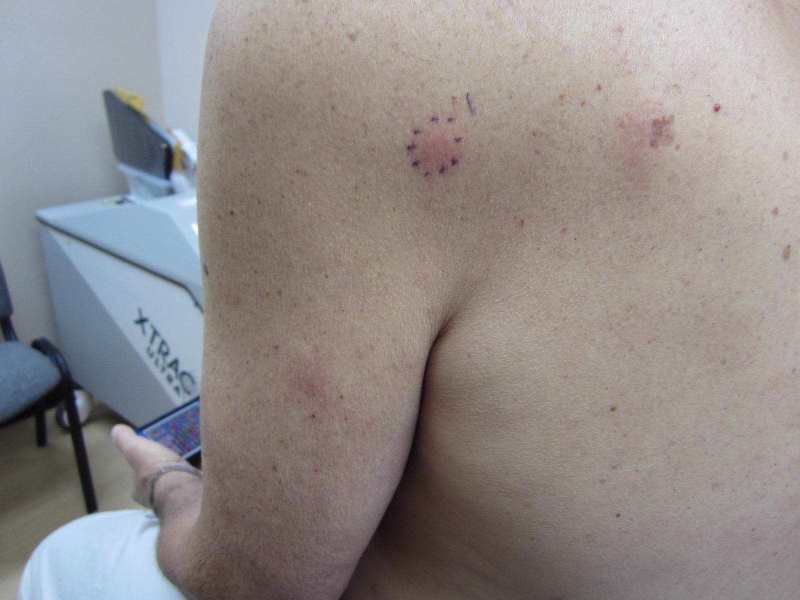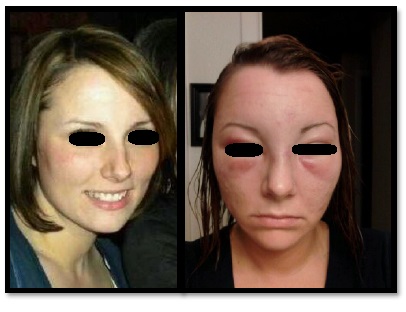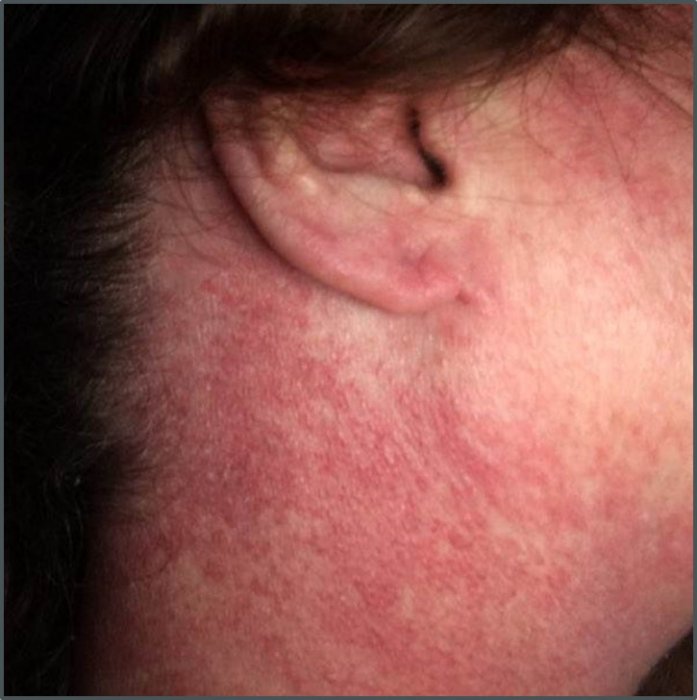CORRECT DIAGNOSIS:
Loose Anagen Hair Syndrome
DISCUSSION:
Loose Anagen Hair syndrome (LAHS) is a benign, self-limited condition where anagen hairs are easily and painlessly extracted.(1) The typical patient is a child, usually 2 to 6 years of age. This disorder affects girls more commonly than boys. In most cases reported, the hair is blond or dark-blond, although dark brown hair has also been observed.(2,3) It is considered to be a sporadic or autosomal dominant disorder with variable expressivity, estimated to have an incidence of 2 to 2.25 cases per million per year.(1,4,5) Parents often note that the child’s hair requires infrequent cutting, is unmanageable, or that accidental hair traction yields clumps of hair.(2)
On examination, the appearance varies, but the hair is often described as thin, matted, lusterless, dull, or dry. There may be patchy or diffuse alopecia without evidence of inflammation or scarring. There are no associated abnormalities of the skin, nails, or teeth. Eyebrows and eyelashes are usually unaffected. The children are otherwise healthy.(2) Most patients with LAHS have no associated laboratory abnormalities.(5) The presence of anagen hair devoid of its sheath and with a rippled surface of the cuticle referred to as a ‘floppy sock appearance,’ is a characteristic feature of loose anagen hair (LAH) on light microscopy.(1,2) Also, the hair bulb is frequently distorted at an acute angle to the hair shaft, a feature known as “mousetail-like” roots.(6)
The precise pathogenesis of LAHS is not known; however, most authors believe that LAH results from premature keratinization of the inner root sheath(IRS) that produces an impaired adhesion between the cuticle of the IRS and the cuticle of the hair shaft. There have been reported mutations in the gene encoding for the companion layer keratin (E337K in K6HF) in some families with LAHS.(1,7) LAHS is in most cases isolated, but it also occurs in association with hereditary or developmental disorders. These include coloboma, Noonan syndrome, hypohidrotic ectodermal dysplasia, EEC (ectrodactyly–ectodermal dysplasia–clefting) syndrome, trichorhinophalangeal syndrome, nail-patella syndrome, neurofibromatosis, trichotillomania, woolly hair, has been described with AIDS, and can be a presenting feature in alopecia areata.(1)
The presence of typical LAH in the trichogram of some normal individuals and persons with alopecia areata led some investigators to state that light microscopic findings in LAH syndrome are not pathognomonic. Diagnosis of LAHS, therefore, relies on a positive pull test with painless extraction of at least 10 hairs and the presence of more than 70% anagen hairs on trichogram.(3) Some suggest that a scalp biopsy be performed to rule out alopecia areata in all cases.(6)
Although loose anagen hair syndrome usually improves spontaneously with age, minoxidil has been used with some success and maybe a reasonable first-line therapy for patients with disease at the severe end of the LAHS spectrum.(1) When the child grows up, the hair becomes longer, denser, and darker. Most patients with LAHS, however, continue to show a small percentage of anagen hairs at the pull test.(3)
TREATMENT:
No therapy was recommended and reassurance was provided. The mother was advised against braiding the hair.
REFERENCES:
Dhurat, R. P., & Deshpande, D. J. (2010). Loose anagen hair syndrome. International Journal of Trichology, 2(2), 96-100. https://doi.org/10.4103/0974-7753.85918 PMID: 20976030
Li, V. W., Baden, H. P., & Kvedar, J. C. (1996). Loose anagen syndrome and loose anagen hair. Dermatologic Clinics, 14(4), 745-751. https://doi.org/10.1016/S0733-8635(05)70049-9 PMID: 8895647
Tosti, A., & Piraccini, B. M. (2002). Loose anagen hair syndrome and loose anagen hair. Archives of Dermatology, 138(4), 521-522. https://doi.org/10.1001/archderm.138.4.521 PMID: 11952636
Sinclair, R., Cargnello, J., & Chow, C. W. (1999). Loose anagen syndrome. Experimental Dermatology, 8, 297-298. https://doi.org/10.1111/j.1600-0625.1999.tb00369.x PMID: 10594567
Cantatore-Francis, J. L., & Orlow, S. J. (2009). Practical guidelines for evaluation of loose anagen hair syndrome. Archives of Dermatology, 145(10), 1123-1128. https://doi.org/10.1001/archdermatol.2009.169 PMID: 19805844
Nunez, J., et al. (1999). Alopecia areata with features of loose anagen hair. Pediatric Dermatology, 16(6), 460-462. https://doi.org/10.1046/j.1525-1470.1999.00171.x PMID: 10559889
Chapalain, V., Winter, H., Langbein, L., Le Roy, J. M., Labreze, C., Nikolic, M., Schweizer, J., & Tateb, A. (2002). Is the loose anagen hair syndrome a keratin disorder? A clinical and molecular study. Archives of Dermatology, 138(4), 501-506. https://doi.org/10.1001/archderm.138.4.501 PMID: 11952633




